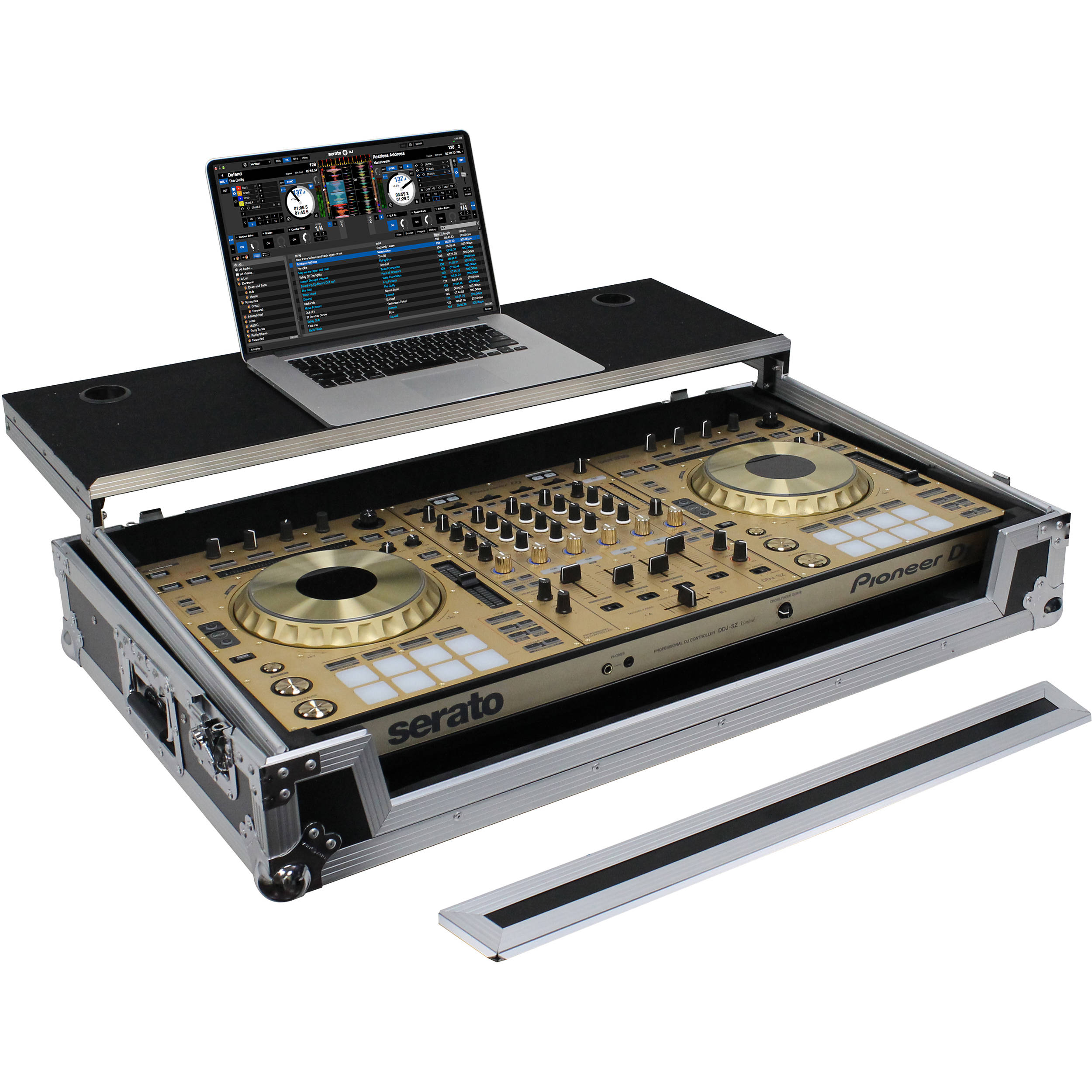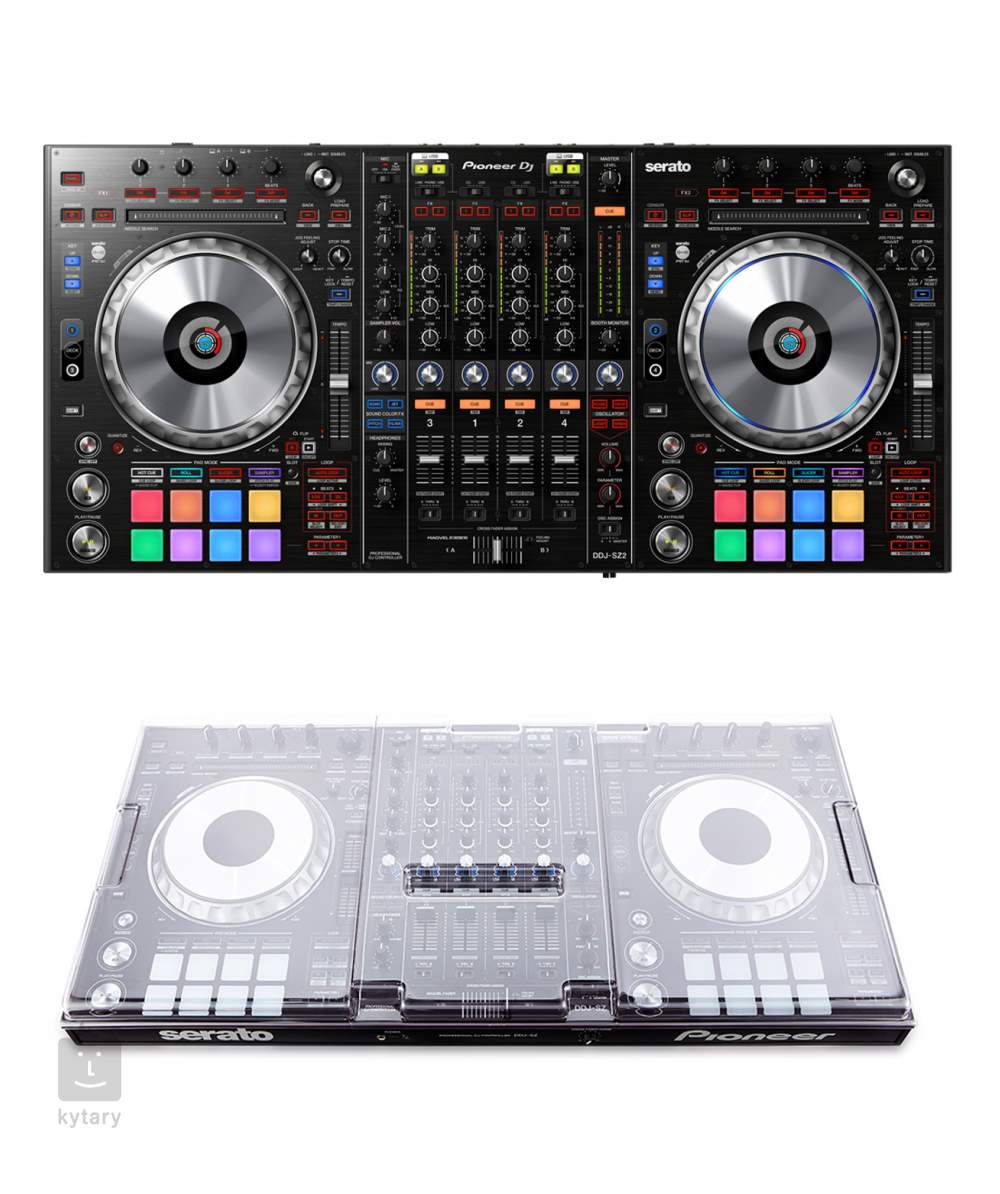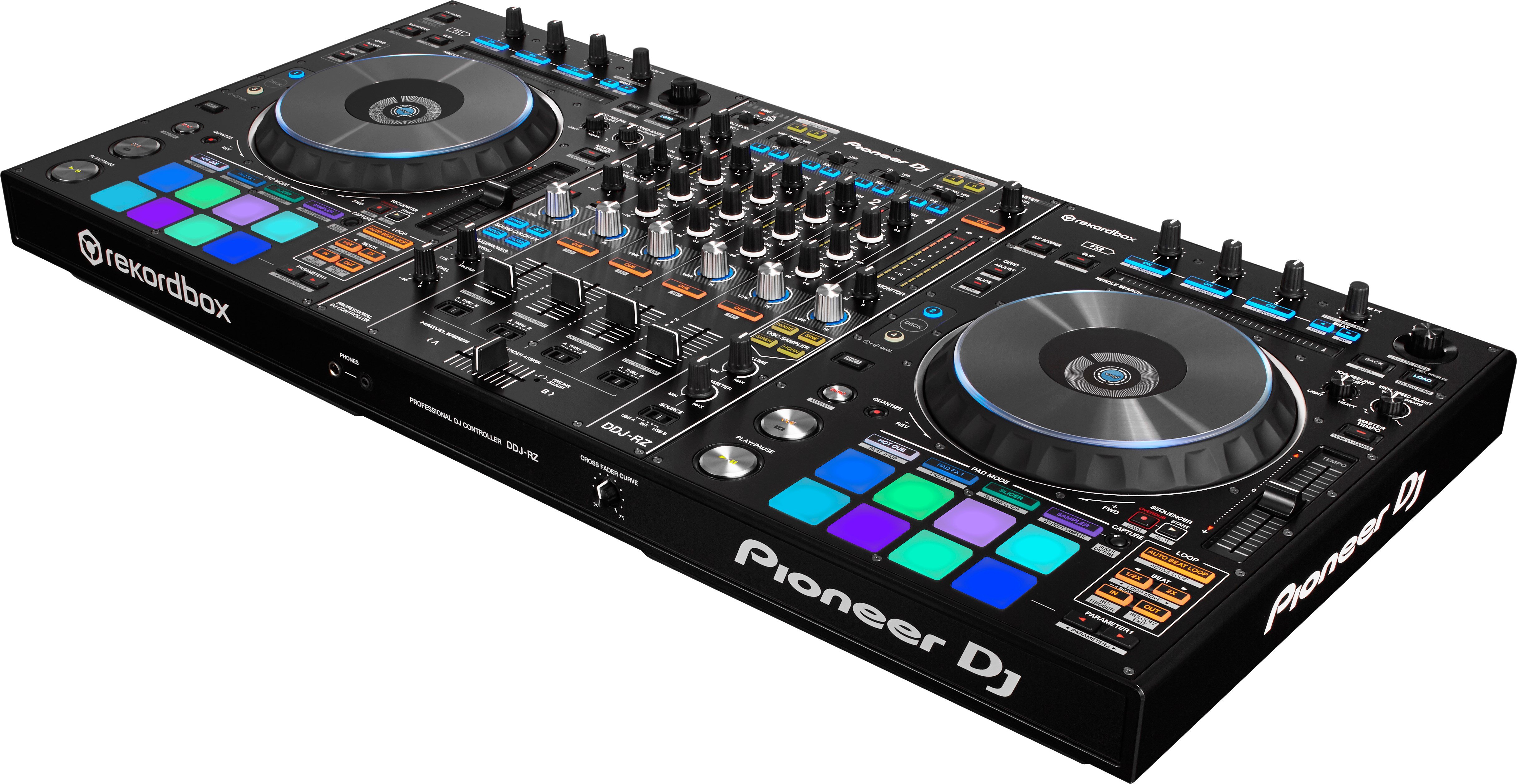The top-flight DDJ-RZ is the first professional, native controller for rekordbox dj, giving you the flexibility to prepare your tracks in rekordbox and then get plug-and-play performance directly from your laptop. The controller mirrors the software's layout precisely to enable intuitive and creative performances. The DJC-FLTSZ from Pioneer is a hardshell ATA flight case design to contain and protect DDJ-RZ, DDJ-SZ2, and DDJ-SZ controllers for DJs and producers on tour and moving between gigs. It will safely house one device and affords additional space for cables and accessories. The Pioneer DJ logo is proudly adorned across the lid of the case.
VirtualDJ Pro Full can be used as a stand-alone software in case of emergency, but to truly unleash its power, you might want to connect it to some dedicated hardware.
VirtualDJ Pro Full is natively compatible with an impressive list of hardware from many manufacturers. And, with the full MIDI compatibility and the open plugin architecture, it can connect to virtually anything.
You will find below a small list of the best hardware for digital DJ one can find on the market today. Many of which come with a version of VirtualDJ Limited Edition (LE) so you can immediately start using your controller.
But, if you don't find what you need here, keep in mind that VirtualDJ Pro Full is compatible with many other controllers, mixers, etc. on the market.
Depending on how and where you mix, you might consider different options:
- Mobile DJs will probably want to get all-in-one controllers, easy to transport and install anywhere.
- Resident DJs will probably want rackmount or table-top controllers (depending on the space available in the booth).
- Turntablists will want a TimeCode solution and a good sound card interface.
- Beginners will be more interested in all-in-one solutions.

Using External Mixer Mode
In order to use External Mixer Mode with DDJ-RZ you need to perform 3 steps:
Set the unit to 'External Mixer Mode on Pioneer's 'DDJ-RZ Setting Utility'
Create the following sound setup:
Select the alternative mapping for External Mixer Mode on Mappers tab:
Recording & Broadcasting
 The unit offers the ability to record the Master Output along with the Microphone and LINE Inputs directly from VirtualDJ record button (in the MASTER center panel). The dedicated Recording input channel is already pre-configured, so no further adjustments need to be done.
The unit offers the ability to record the Master Output along with the Microphone and LINE Inputs directly from VirtualDJ record button (in the MASTER center panel). The dedicated Recording input channel is already pre-configured, so no further adjustments need to be done.The recorded output includes any source routed to the Mixer, including analogue media sources connected to the LINE or PHONO Inputs when the top switchers are set to the relative position.
Since the audio to be recorded is coming from the USB sound interface of DDJ-RZ, the sound level of your recording will depend on the 'USB Output Level' setting of DDJ-RZ Setting Utility. By default it's set to -19db, which is a value that provides enough headroom for mixing with all 4 channels combined with effects, e.t.c. We recommend to use the default value and use a post-processing software to boost the levels of your recordings if you need to do so.
Timecodes (DVS)

DDJ-RZ offers DVS (Timecoded CDs and Vinyls) Support.
Depending on whether you use Timecode Vinyl (Turntables) or Timecode CDs (CD Players) please perform the following steps:

- Connect your Turntables to LINE 3 and/or LINE 4. If you use CD Players connect them to LINE 1 and/or LINE 2 Inputs.
- Place the Input switches on the top panel to USB position for the related Mixer Channels
- Open VirtualDJ Settings ->AUDIO tab ans press the TIMECODE SIGNAL button from the INPUT tab
- Select the correct audio channels:
For Turntables use 5&6 for Channel 3 and 7&8 for Channel 4
For CD Players use 1&2 for Channel 1 and 3&4 for Channel 2 - Click to APPLY
Use the TIMECODE On/Off buttons that will be offered on the Decks (or in the SCRATCH panel for the 4 Decks default VirtualDJ GUI) to enable/disable Timecode control or use the Timecode signal to control a different Deck (e.g. swap Timecode control for Left decks when the 4 Decks GUI is selected)
For Timecode CD's the unit also offers you the ability to connect them in Inputs 3 & 4 instead of turntables. In order to do so please open the 'DDJ-RZ Setting Utility', click on the 'CONTROLLER OUTPUT' tab and switch 'USB5/6' Output from 'CH3 Control Tone PHONO' to 'CH3 Control Tone CD'. Repeat the same procedure for 'USB7/8' Output and change from 'CH4 Control Tone PHONO' to 'CH4 Control Tone CD'
LINE INS
The LINE Inputs 1 and 2 can be also used to send audio signal from an analogue media source connected at the rear panel to VirtualDJ for processing.
- Connect your analogue media devices to LINE 1 and/or LINE 2
- Place the Input switches on the top panel to USB position on Mixer Channels 1 and/or 2
- Open VirtualDJ Settings ->AUDIO tab and press the LINE INPUT button from the INPUT tab
- Click to APPLY
Use the LINE IN On/Off buttons that will be offered on the Decks (or in the SCRATCH panel for the 4 Decks default VirtualDJ GUI) to enable/disable Line In routing to a VirtualDJ deck.
This will provide the ability to synchronize BPM with other decks, use Effects etc.
TIMECODES & LINE INPUTS AT THE SAME TIME
It is possible to use both Timecodes and Line Inputs at the same time.
Ddj Rz Pioneer
- Connect your analogue media devices to LINE 1, LINE 2, LINE 3 and LINE 4 Inputs as described on the chapters above.
- Place the Input switches on the top panel to USB position on all Mixer Channels
- Open VirtualDJ Settings ->AUDIO tab and press both LINE INPUT and TIMECODE SIGNAL buttons from the INPUT tab
- Click to APPLY
MICROPHONE INPUTS
DDJ-RZ offers 2 Microphone Inputs and Level/EQ controls from the top panel. Both audio signals from these inputs are directly routed to the Master Output of the unit.
The Microphone inputs are not part of the USB Audio interface, so these cannot be added in VirtualDJ Audio setup and will not control the software Microphone section in the MASTER panel of VirtualDJ GUI and vice versa.
However, as mentioned in the Recording section, both Microphone Inputs can be recorded via the REC button of VirtualDJ via the dedicated recording input channel of the Audio interface.
Pioneer Ddj Sx2 Firmware Update
Pioneer Ddj Rz

Comments are closed.